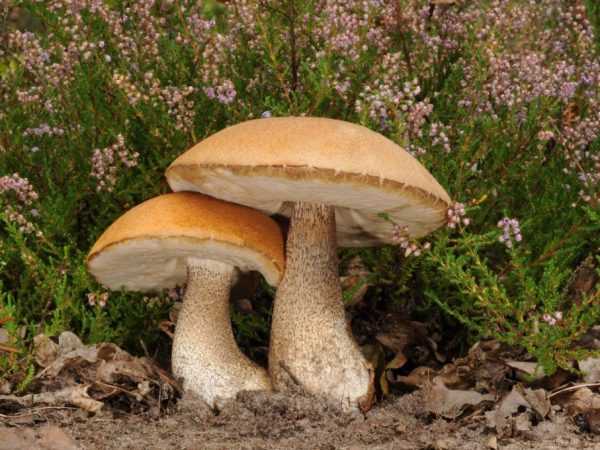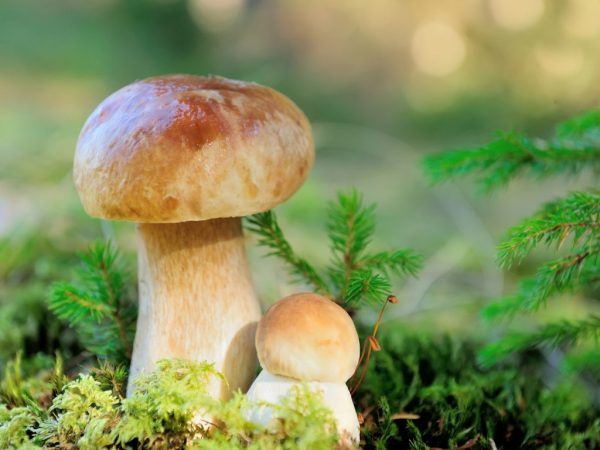Mushrooms of the Moscow Region in September 2019
In early autumn, after a hot summer, a quiet hunting season begins. Mushrooms of the Moscow Region in September 2019 will differ in their variety. The mushroom harvest in 2019 promises to be big.

Mushrooms of the Moscow Region in September 2019
Recommendations for the mushroom picker
For the Moscow region, a universal map of mushroom places with an indication of the route has long been created. In different regions of the Moscow region, there are different types of mushrooms.
Regional reports of mushroom pickers who have been going on a "quiet hunt" for a long time and have drawn up their own map of mushroom places will be useful. The occurrence of mushrooms also depends on the weather conditions, whether the summer was dry or rainy. In September 2019, there is an active growth of autumn species:
- boletus;
- boletus;
- flakes;
- black hairs;
- chanterelles;
- mushrooms;
- rows;
- russula;
- Champignon;
- White mushrooms.
Some of them are just starting their development in September, while others are already completing. Preference in collection is usually given to young individuals in order to be sure of quality. Mushroom pickers also need to know the habitat of each species, although as practice shows, it does not always coincide with the actual place of growth.
When going on a long trip, it is better to wear suitable clothes, take the necessary tools (knife, etc.).
Irina Selyutina (Biologist):
- Dress for mushroom picking should be appropriate for the weather. If the clothes are chosen correctly, they will not restrict movement and will protect against blood-sucking arthropods. There must be long sleeves and a closed neckline. A scarf or kerchief is suitable to protect the neck. Of course, a camouflage army uniform is ideal. Attention! Do not count on repellents - their duration in the forest is usually no more than 1 hour.
- Shoes - boots, boots, sneakers, or army boots, but never flip flops or sandals.
- You can take a disposable plastic raincoat with you.
- There must be a hat on the head - protection from arthropods and weather conditions.
- If children go to the forest to pick mushrooms, dress them in brighter so that they can be seen even with peripheral vision.
During collection, only those fruiting bodies should be cut off in which you are sure. Remember that hedgehogs and ryadovki have many poisonous counterparts and it is better to collect them for already experienced mushroom pickers, "pros" in this matter.
Seasonal - those that began to grow in mid-August and September - are considered:
- flakes;
- autumn mushrooms;
- aspen mushrooms;
- boletus;
- rows.
The autumn season lasts until mid to late November. Some mushrooms are found even after the first frost. But the harvest brought from such a "hunt" will be small: the level of freezing and damage by animals is high.
Gathering in the north

Look for mushrooms in the northern part of the woods
In the north of the region, between the Kaluga and Leningrad directions, they collect:
- boletus;
- porcini;
- honey mushrooms;
- mushroom;
- boletus.
The stations Firsanovskaya and Podrezkovo are considered the most mushrooming places on the Leningradskaya line. On the Savelovsky direction, they are looking for mushrooms not far from Lugovaya. On the Riga direction, you need to get up at the stations Rumyantsevo, Yadroshino, Opalikha.
Here, mushrooms are best found in the northern part of the forest. They usually get to the collection points by commuter trains and go to the forest for the whole day. The search is not limited to the above species only: it is easy to find representatives of a specific species under the deciduous cover or coniferous plantations.
Local residents also talk about possible trophies on thematic forums. Their advice will be the most truthful and effective for a mushroom picker.
Collection in the southern areas
There are many deciduous and coniferous forests in the south of the Moscow region. Therefore, they go hunting for:
- pigs;
- butter oils;
- chanterelles;
- boletus;
- boletus;
- rows.
The southern direction is the territory between Ryazan and Kaluga railway stations and branches from them. On the Ryazan branch they get to the Chornaya and Lukhovitsy stations. From the Paveletsky railway they go to Vostryakovo and Shugarovo. Kursk direction - Hryvno and Kolkhoznaya.
Western direction
The west of the region is the territory between the Kaluga and Leningrad directions. Covers the Kiev, Belorusskaya, partly Kursk railway lines. The stations Pobeda, Dachnaya, Khlyupino, Petelino are considered mushroom stations.
They are collected 35-45 minutes from the terminal station. Mixed and separate coniferous and deciduous forests grow in the region. Almost all types are collected there:
- Champignon;
- honey agarics;
- boletus;
- chanterelles;
- aspen mushrooms;
- russula;
- blackies;
- milk mushrooms;
- White mushrooms.
In the forests it is better to look for aspen mushrooms, russula, milk mushrooms, and in ravines, fields - porcini mushrooms. Many mushrooms hide under the turf. It is worth planning a daily route for no more than 15 km.
Eastern Region
In the East, between the Ryazan and Yaroslavl directions, the mushroom season begins in early summer. Mushroom places - Abramtsevo, Shevlyagino and Gzhel.
Good light and favorable conditions promote abundant growth of mushrooms. Walking along the banks of rivers, deciduous forests, mushroom pickers often stumble upon:
- White mushrooms;
- chanterelles;
- russula;
- aspen mushrooms.
The minimum route that you have to go to get a full basket is about 2 km, and the maximum is 16 km. There is a chance to find the mushroom kingdom further, in forests and plantations remote from settlements. Locals usually sell mushrooms directly at railway stations.
Conclusion
The Moscow mushroom map is extensive and diverse enough. They are advised to collect them in the suburbs, going there by train. You can also search in birch groves and parks. But edible mushrooms must be collected far from civilization so as not to be poisoned by dangerous toxins.
Irina Selyutina (Biologist):
Having decided that your harvest of mushrooms is too small, do not buy them in spontaneous markets, near highways. It is better to buy from those sellers in the market whose product quality has been tested by time.
Do not forget that by its nature a mushroom is a natural sponge that absorbs everything that comes from the environment along with precipitation from the air and soil. Therefore, there will be a very high probability of poisoning even with edible mushrooms that were collected near busy highways, dumps, industrial enterprises, as well as places with unfavorable conditions - environmental, bacteriological, etc.
The eastern region is considered the most environmentally friendly and "mushroom". In September 2019, preference is given to young seasonal "fruits". Do not forget that the world of mushrooms is deceiving, so it is better to carefully choose and not eat those mushrooms that are not sure of their safety.



